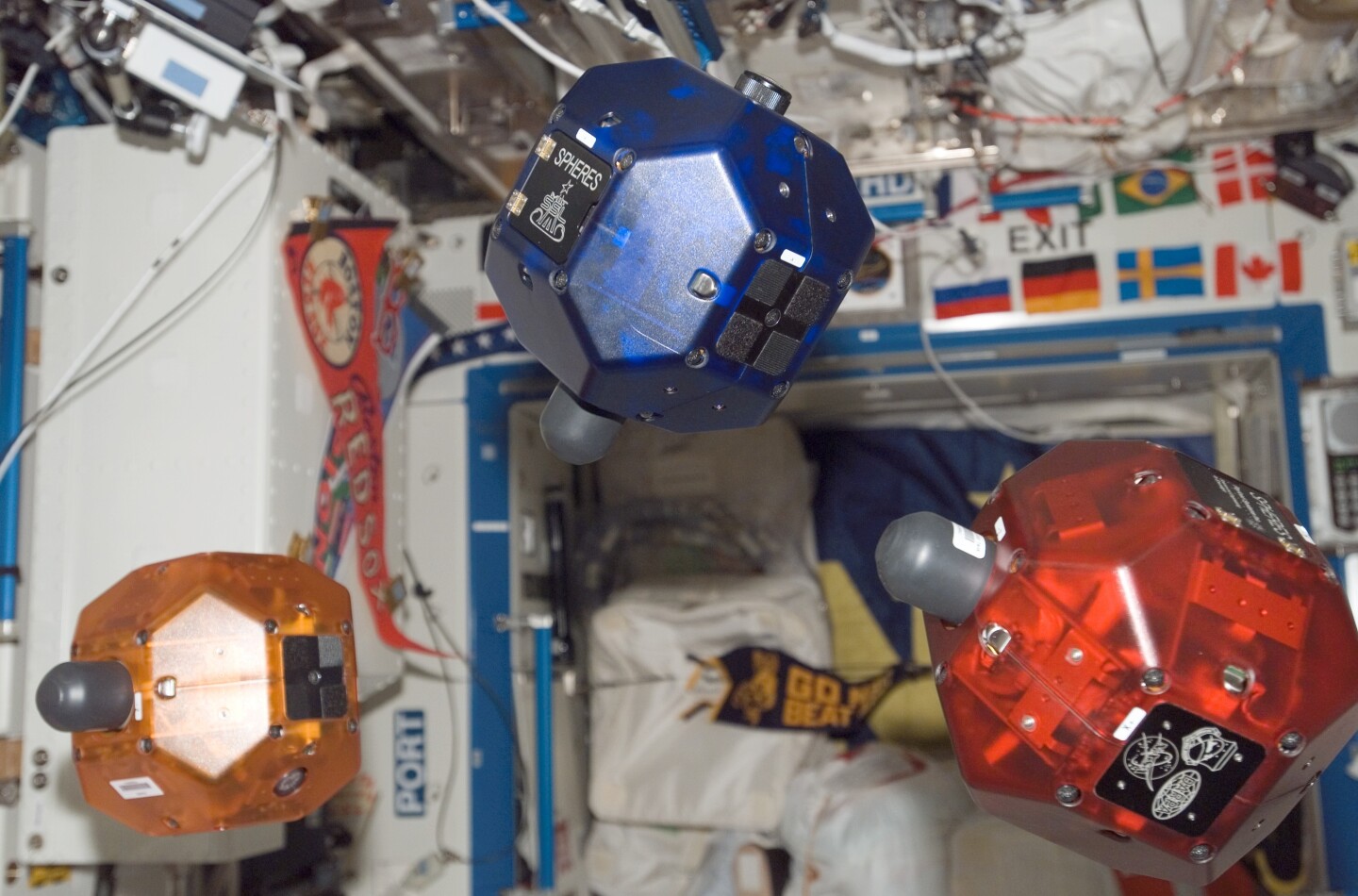If you want to know how big the crew of the International Space Station (ISS) is at present, the answer depends on whether or not you’re counting the robots on board. Some of the non-human residents will soon be getting smarter, with NASA announcing that the Synchronized Position Hold, Engage, Reorient, Experimental Satellites (SPHERES) robots currently on the station will later this year get a new smartphone. The increased capability of the soon to be Smart SPHERES is designed to help transition them from engineering testbeds to workaday companions that can take over some of the duties of the station astronauts.
At the moment, there are three SPHERES robots aboard the ISS. These self-contained plastic polygonal spheres carry their own power, propulsion, computers, and navigation gear, as well as expansion ports for additional appendages. They’re used for microgravity research as an engineering and robotics testbed, and for exploring the application of free-flying robots. According to NASA, some 77 experiments have been conducted so far, including testing technologies related to automated dockings, satellite servicing, spacecraft assembly, and emergency repairs. Last year, they were even decked out with goggles as part of experiments in 3D navigation and mapping.
Now as part of Project Tango, a new smartphone is being developed by Google’s Advanced Technology and Projects division of Mountain View, California. An advance on the smartphones that are currently the brains of the SPHERES’, the completed phones are scheduled to be brought to the ISS later this year. According to NASA, once the new smartphones are installed they’ll give the SPHERES’ more computing power (making them into what NASA calls Smart SPHERES’), cameras, WiFi connections, and an integrated bespoke 3D sensor, which will allow the robots to map their surroundings in real time. It will also give the robots the capability to carry out inspections using still images and videos and to directly communicate with the station’s computers.

Before the phone can be sent into space, it needs to be tested in microgravity, so the next step will be to send on in an airplane on a parabolic trajectory to test it’s hardware and software. Once the smartphone has passed earthbound tests and has been sent to the ISS, it will be used to test controlling the SPHERES robots from the ground.
Currently, the SPHERES’ are designed to only operate inside the space station, but the eventual plan for the roots is that they will one day go outside to act as assistants to carry out routine inspections and inventories, monitor EVAs, or carry objects for an astronaut.
"With this latest upgrade, we believe the Smart SPHERES will be a step closer to becoming a ‘mobile assistant' for the astronauts,” says DW Wheeler, lead engineer with SGT Inc in the Intelligent Robotics Group at Ames. "This ability for Smart SPHERES to independently perform inventory and environmental surveys on the space station can free up time for astronauts and mission control to perform science experiments and other work.”
Source: NASA









